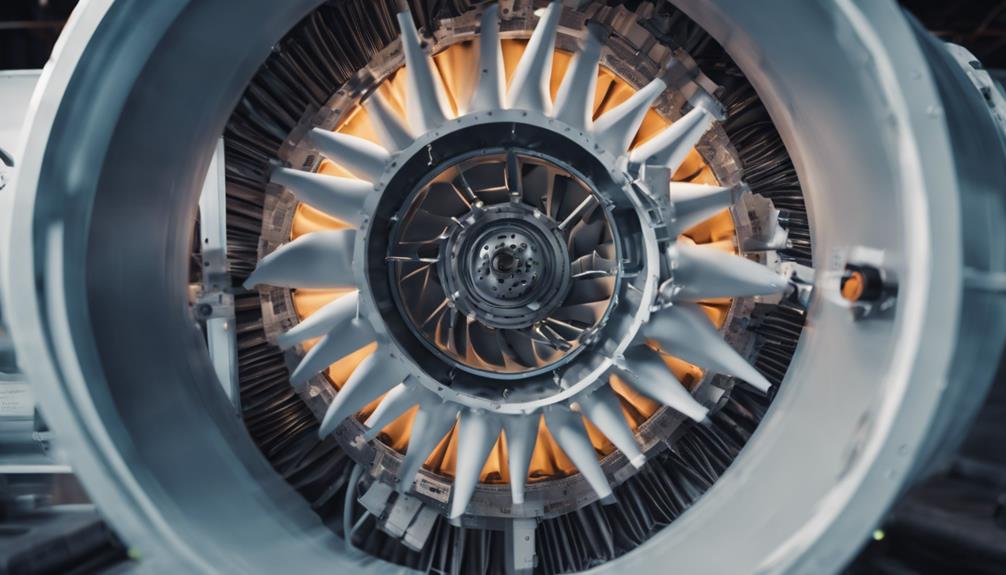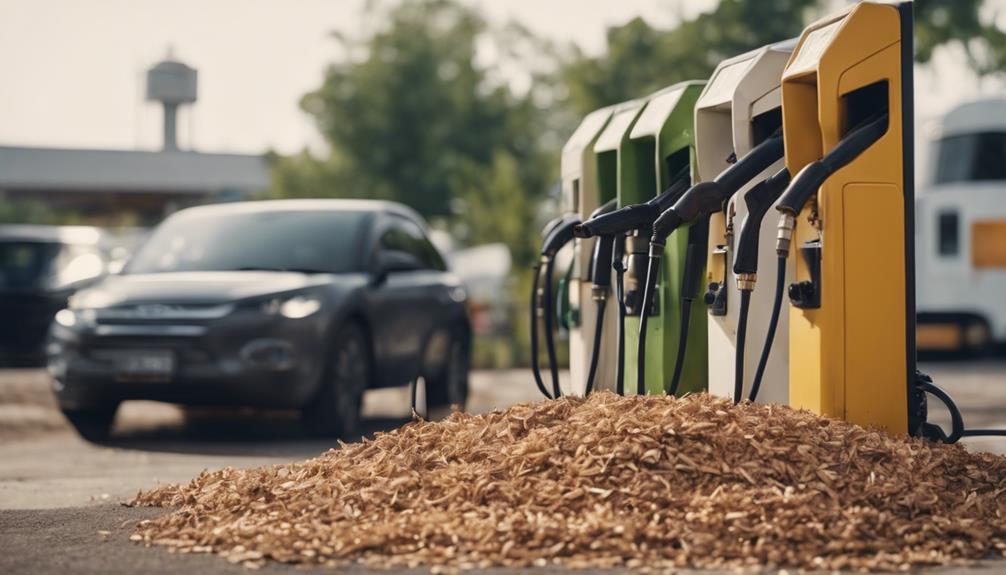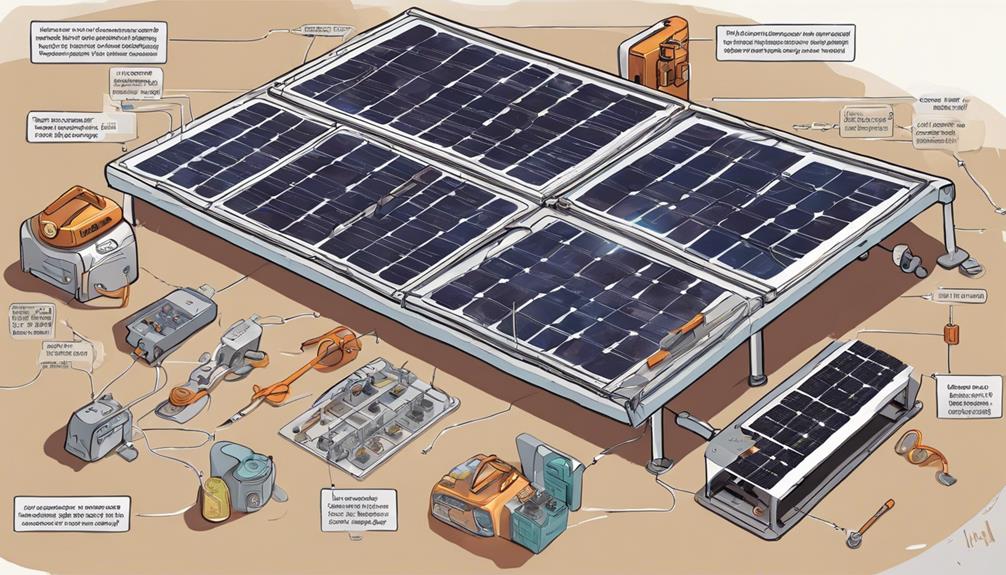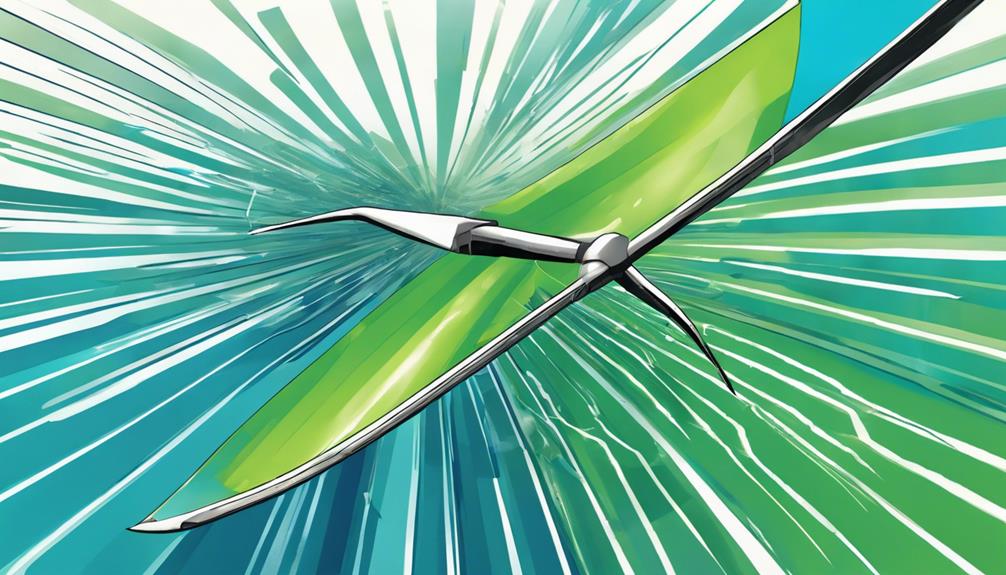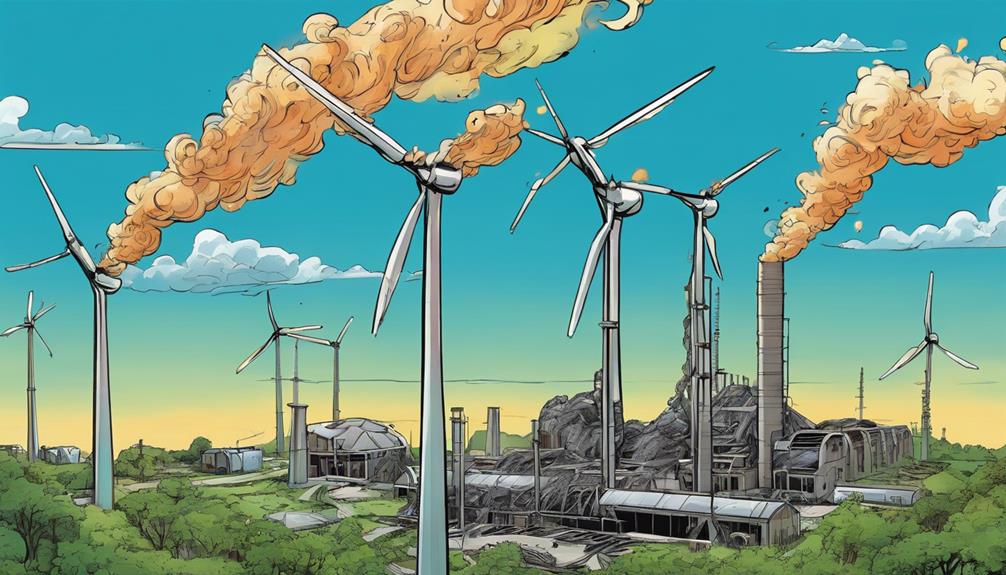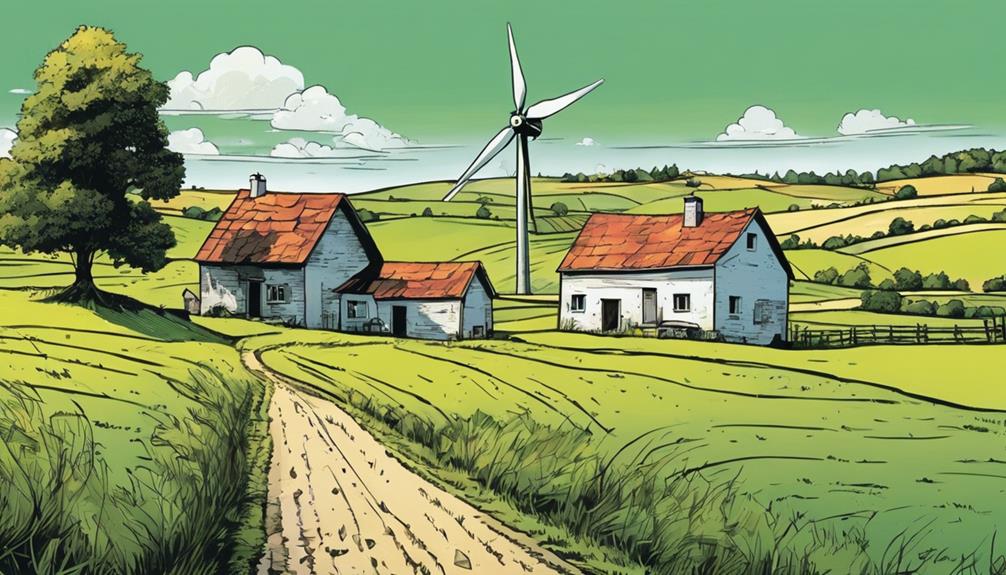In a wind turbine generator, 2 to 8 poles are commonly used, influencing speed, efficiency, and power output. The number of poles plays an essential role in performance optimization for maximum efficiency. Different pole configurations affect rotational speed and power output differently. Understanding the impact of pole count on efficiency is crucial. If you want to learn more about how pole count affects wind turbine performance, discover further insights on factors influencing pole selection, the significance of pole count in efficiency, and how to select the right poles for energy production.
Key Takeaways
- Wind turbine generators commonly use 2, 4, 6, or 8 poles.
- Pole count impacts rotational speed, efficiency, and power output.
- Engineers consider torque, speed, and power goals for pole selection.
- Higher pole count can enhance efficiency and reduce size.
- Proper pole selection crucial for maximizing performance and energy production.
Pole Count in Wind Turbine Generators
When designing wind turbine generators, the pole count plays a pivotal role in determining their performance and efficiency. The number of poles directly impacts the rotational speed, efficiency, and power output of the generator.
Wind turbine generators typically come with 2, 4, or 6 poles, and selecting the right number is essential to meet design requirements and operational needs.
A higher pole count can lead to a slower rotational speed but can enhance efficiency and reduce generator size and weight for the same power output. This makes it important to carefully consider the trade-offs between rotational speed and efficiency when deciding on the number of poles for a wind turbine generator.
Factors Influencing Pole Selection
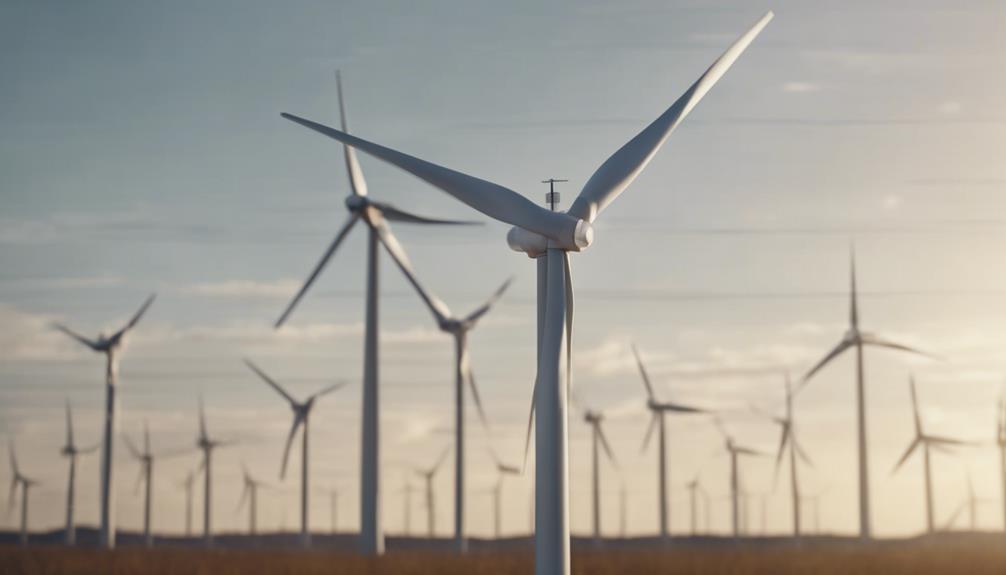
Factors that influence the selection of poles in wind turbine generators include generator speed, frequency requirements, and desired torque characteristics.
The number of poles chosen impacts the rotational speeds, efficiency, power output, and overall performance of the wind turbine generator. For instance, higher pole counts result in lower rotational speeds, necessitating larger and heavier generators. Conversely, lower pole counts are preferable in high-speed applications to meet the necessary frequency output.
The torque characteristics desired from the generator also play a pivotal role in pole selection. By carefully considering these factors, engineers can optimize the wind turbine generator's performance and efficiency.
Ultimately, the choice of poles is a significant decision that directly affects how well the wind turbine generator converts wind energy into electrical power, highlighting the importance of selecting the appropriate pole configuration for specific operational requirements.
Common Pole Configurations in Generators
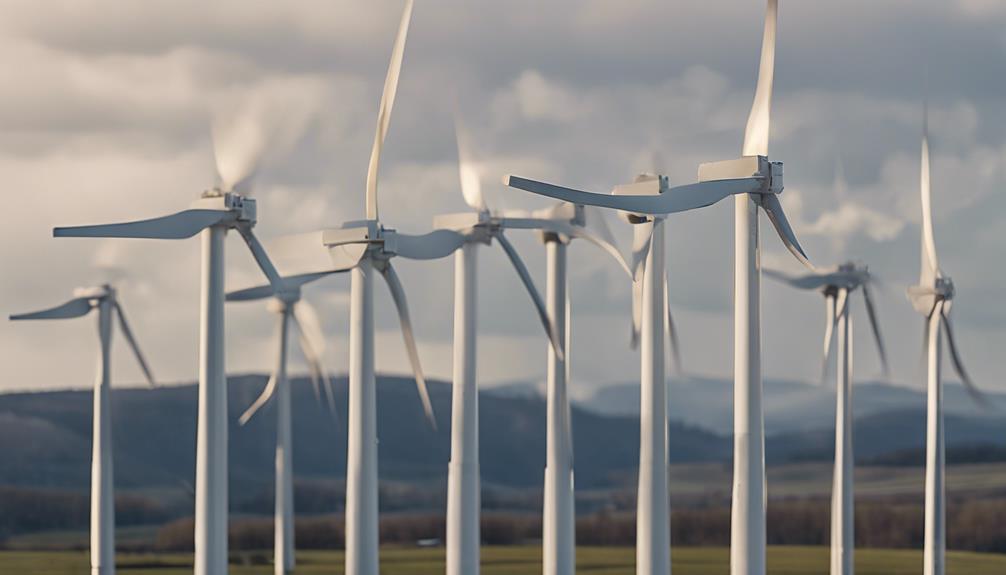
In wind turbine generators, the common pole configurations typically include 2, 4, 6, or 8 poles. The pole count in a generator directly influences its rotational speed and frequency output. For instance, a generator with 4 poles typically runs at 1,500 revolutions per minute (RPM), while a 6-pole generator operates at around 1,000 RPM. Higher pole counts result in slower rotational speeds and lower frequency outputs. The selection of pole configurations is vital as it must align with the desired generator speed and specific application requirements. Different pole counts are chosen based on the amount of wind energy available, the efficiency required, and the construction constraints. Below is a table illustrating the relationship between pole count, rotational speed, and frequency output:
| Pole Count | Rotational Speed (RPM) | Frequency Output (Hz) |
|---|---|---|
| 2 | High | High |
| 4 | 1,500 | Moderate |
| 6 | 1,000 | Low |
| 8 | Low | Low |
Importance of Pole Count in Efficiency
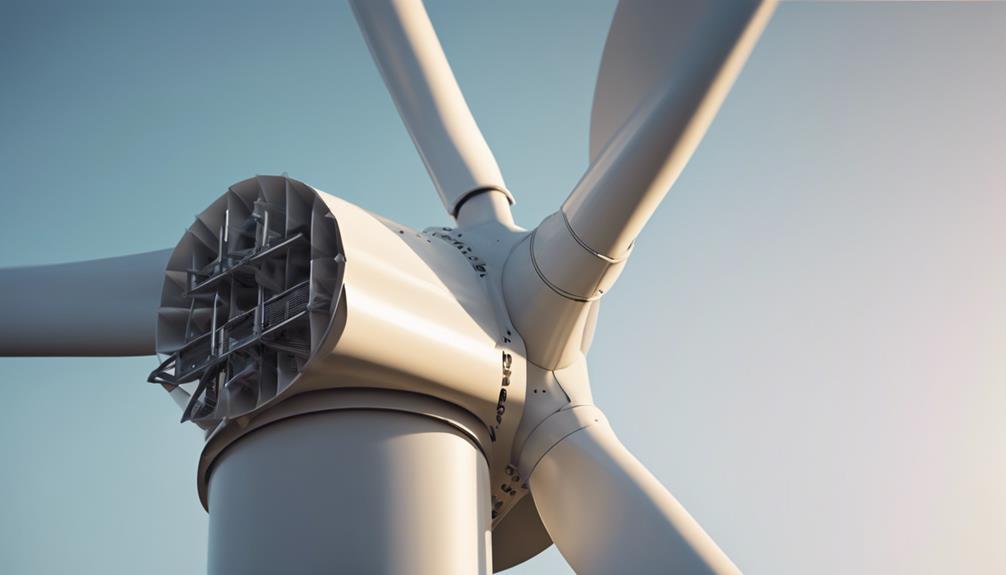
You should understand that the pole count in a wind turbine generator has a significant impact on its efficiency.
Consideration of pole count is important for maximizing the system's performance and power generation capabilities.
Knowing the ideal pole numbers for your turbine can lead to improved efficiency and better operational speed.
Pole Count Impact
The pole count in a wind turbine generator greatly influences its efficiency and performance. The number of poles directly impacts the speed, frequency, and torque output of the generator. Wind turbine generators typically have pole counts ranging from 2 to 24.
Higher pole counts lead to slower rotational speeds but higher torque output, while lower pole counts are often preferred in direct-drive turbines for increased efficiency. Selecting the appropriate pole count is necessary for optimizing the generator's performance and aligning it with the wind turbine's characteristics.
Efficiency Considerations
Considering the pole count in a wind turbine generator plays an essential role in determining its efficiency and overall performance. The number of poles directly impacts rotational speed, torque characteristics, mechanical stress, longevity, power output, operational stability, and energy production.
Higher pole counts can lead to lower rotational speeds, reducing mechanical stress on the system and increasing its longevity. Engineers carefully select the pole count to balance efficiency, power output, and operational stability, aiming to maximize energy production while maintaining reliability and performance.
By optimizing the pole count, wind turbine generators can operate more efficiently, enhancing their overall performance. The selection of an appropriate pole count is crucial for ensuring the wind turbine generator functions effectively, delivering the expected output while withstanding mechanical stresses and maintaining operational stability.
Understanding the relationship between pole count and efficiency is essential for designing wind turbine generators that can perform optimally and reliably over their operational lifespan.
Optimal Pole Numbers
Understanding the best pole numbers in a wind turbine generator is necessary for maximizing its efficiency and performance.
When selecting the most suitable number of poles for a wind turbine generator, consider the following:
- Efficiency and Performance: The pole count directly influences the efficiency of the generator in converting wind energy into electricity. Higher pole counts are associated with increased torque output but lower speeds, impacting the overall performance of the system.
- RPM and Frequency: The number of poles in the generator affects the rotational speed (RPM) of the turbine blades and the frequency of the electricity produced. Finding the right balance in pole count is essential for achieving the desired RPM and frequency for efficient power generation.
- Electricity Production: The pole count plays a significant role in determining the amount of electricity produced by the wind turbine generator. By optimizing the pole number, you can enhance the overall electricity generation capacity and output of the system.
Optimal Pole Number for Performance
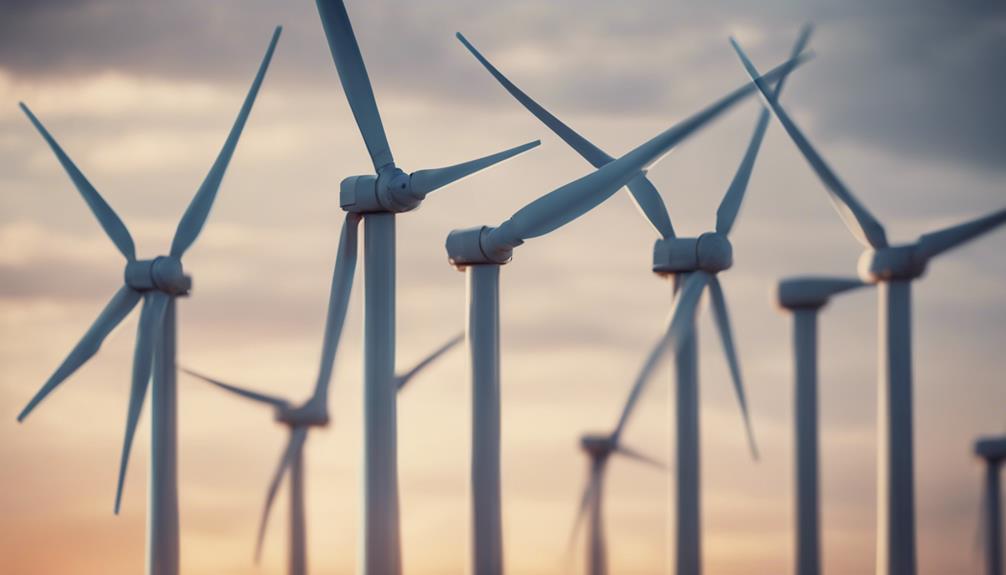
When considering the best pole number for your wind turbine generator, you must weigh the impact it has on performance. Selecting the right pole count can greatly influence the speed, torque, and overall efficiency of your generator in converting wind energy.
Make sure to carefully assess your specific wind conditions, turbine size, and power output goals to determine the most suitable pole number for maximizing performance.
Pole Number Impact
How does the best number of poles in a wind turbine generator impact its performance?
When it comes to maximizing the efficiency and power production of a wind turbine generator, selecting the most suitable number of poles plays a significant role.
Here are three key ways in which the number of poles can impact the performance of a wind turbine generator:
- Rotational Speed and Power Output: The number of poles directly influences the rotational speed of the generator, affecting the power output it can deliver.
- Smoother Operation and Reduced Noise Levels: Higher pole numbers in wind turbine generators can result in smoother operation and decreased noise levels, enhancing the overall user experience.
- Efficiency and Power Production: The selection of the right pole number is essential for achieving the synchronous speed needed for best efficiency and maximizing power production in wind turbine generators.
Choosing the correct number of poles is crucial in ensuring that a wind turbine generator operates at its peak performance levels, delivering efficient and reliable power generation.
Performance Optimization
Selecting the best number of poles in a wind turbine generator is vital for maximizing its performance and efficiency. The pole numbers play a pivotal role in optimizing performance by influencing speed, torque, and power output based on prevailing wind conditions. Wind turbine generators typically have pole numbers ranging from 2 to 24, with each number offering specific advantages.
Higher pole numbers can deliver smoother operation and increased efficiency at lower wind speeds, making them ideal for regions with consistent but gentle winds. Conversely, lower pole numbers may be more suitable for areas with higher wind speeds, ensuring peak performance under such conditions. Engineers meticulously assess the ideal pole number to enhance energy production and overall wind turbine performance.
Pole Selection for Energy Production
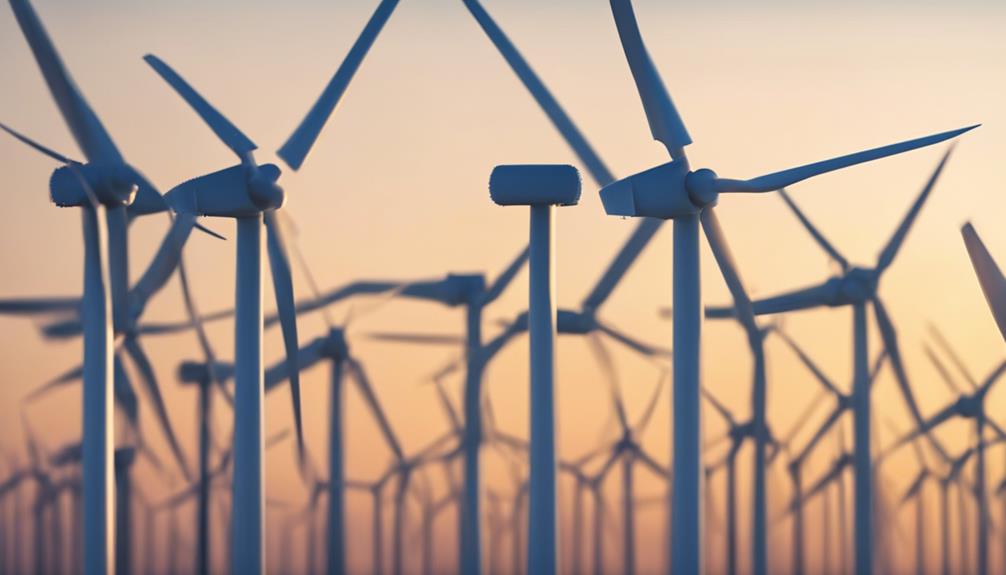
For the best energy production in wind turbine generators, carefully consider the number of poles used in their construction.
When selecting poles for wind turbine generators, keep in mind:
- Efficient Energy Production: The number of poles directly impacts the efficiency of energy production in wind turbine systems. Choosing the right number of poles ensures peak energy output.
- System Performance: Poles play a pivotal role in determining the overall performance of the wind turbine generator system. Proper pole selection can enhance the system's efficiency and reliability.
- Frequency Output and Torque: The number of poles influences the rotational speed, torque, and electrical frequency output of the wind turbine generator. Selecting the correct number of poles is essential for achieving the desired frequency and torque levels for efficient energy generation.
Consider these factors when deciding on the number of poles for your wind turbine generator to maximize energy production and system performance.
Frequently Asked Questions
What Are Wind Turbine Poles Made Of?
Wind turbine poles are typically made of magnetic materials like iron or steel to improve electromagnetic induction. They play an essential role in enhancing the generator's efficiency and power output, impacting its overall performance.
What Is the Average Size of a Wind Generator?
The average size of a wind generator typically ranges from 1.5 MW to 3 MW in capacity. Modern designs commonly use 2 poles, 4 poles, or 6 poles. Larger turbines may employ more poles for efficiency.
How Tall Is a Wind Turbine Pole?
When sizing up wind turbine poles, think big! Taller poles, typically 50 to 100 meters high, are key for catching strong winds at higher altitudes. They help maximize energy production by tapping into those powerful gusts efficiently.
How Many Parts Do Wind Turbines Have on Average?
Wind turbines typically consist of multiple components like blades, nacelle, and tower. They work together to harness wind energy efficiently. The number of parts can vary, but on average, a wind turbine has around 8-10 major components.
Can the Number of Poles in a Wind Turbine Generator Affect its Breakdowns and Solutions?
The number of poles in a wind turbine generator can impact its breakdowns and solutions. A higher number of poles can lead to more frequent breakdowns, but also allow for more efficient solutions. By efficiently addressing wind turbine breakdown solutions, the impact of breakdowns can be minimized, leading to improved performance.
Conclusion
So, next time you see a wind turbine generator spinning in the distance, remember that it's likely using between 2 to 4 poles to generate clean energy efficiently.
Did you know that the average number of poles used in modern wind turbine generators is around 3? This ideal configuration allows for maximum energy production while minimizing mechanical stress on the system.
Keep an eye out for these technological marvels harnessing the power of the wind!
